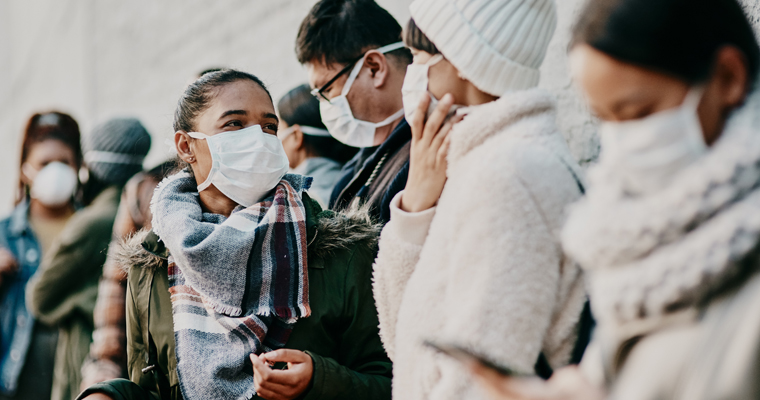UMass Boston Teams with Northeastern, City on COVID-19 Research Reports
UMass Boston and Northeastern University researchers have launched Living in Boston During COVID-19, a series of reports analyzing a survey conducted in the summer about how Boston residents have been affected by the coronavirus pandemic. The findings are unique in that they provide insight to understanding how activities, attitudes, and experiences of Bostonians during the pandemic have varied--by neighborhood, by race, by income. UMass Boston’s Center for Survey Research surveyed 1,626 Bostonians to analyze inequities in COVID-19 risk exposure between individual neighborhoods, looking at factors like traveling to work, food access, and public transportation. Among the findings was that Black and Latinx residents in Boston were much more likely to have to physically go to work: Nearly a third were working fully in-person in April compared to fewer than 15 percent of white and Asian respondents.

This study was designed by researchers at Northeastern’s Boston Area Research Initiative (BARI) and at UMass Boston’s Center for Survey Research (CSR), with funding from the National Science Foundation and in collaboration with the Boston Public Health Commission. This study is the first to assess how these risks impacted residents by neighborhood, race, and socioeconomic status within a single city.
This first report, Inequalities in Navigating a Pandemic, highlights how some Bostonians were able to alter their daily activities to minimize their exposure to risk and maximize their health, whereas others were not. It shows stark disparities by race and income in who had to go to work, how people accessed food, and who was riding transit and exercising.
Key findings include:
- Most respondents reported minimizing necessary activities outside the house, especially in April. Very few went physically to work or rode public transit, and most went to the grocery store or food pantry 1-2 times a week. A little under half ordered food or groceries for delivery, lowering their risk exposure.
- There were stark differences in these activities among neighborhoods.
- Lower-income respondents took on more risk to access food by making more total weekly trips to grocery stores and food pantries. Some higher income respondents appeared to be offsetting this risk by ordering food or groceries for delivery, which very few low-income respondents did.
- Although very few individuals reported any transit riding in April or the summer, those who did ride transit were concentrated in neighborhoods with a majority of people of color—Roxbury, Dorchester, Mattapan, and East Boston.
- Outdoor exercise was high in affluent, majority-white, low-density neighborhoods (e.g., Jamaica Plain), but rare in low-income neighborhoods.
The series of reports will provide public officials, community leaders, and decision-makers a resource to understand the impacts of COVID across the city, and to especially understand how and why the pandemic has hit historically marginalized communities the hardest. This information is crucial at this time as cases again spike.
The team includes Professor of Sociology Russell Schutt; Lee Hargraves, interim director of the Center for Survey Research; Floyd (Jack) Fowler, a senior research fellow at the Center for Survey Research; Anthony Roman, a senior research fellow at the Center for Survey Research; Hannah Grabowski, a research assistant and student in the Graduate Program in Applied Sociology; and Nikola Kovacevic, assistant study director in the Center for Survey Research.
